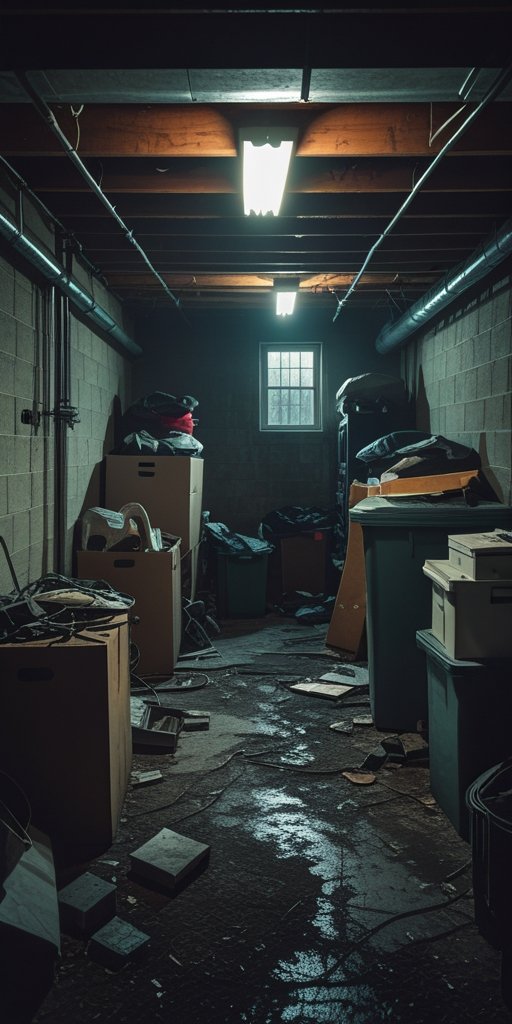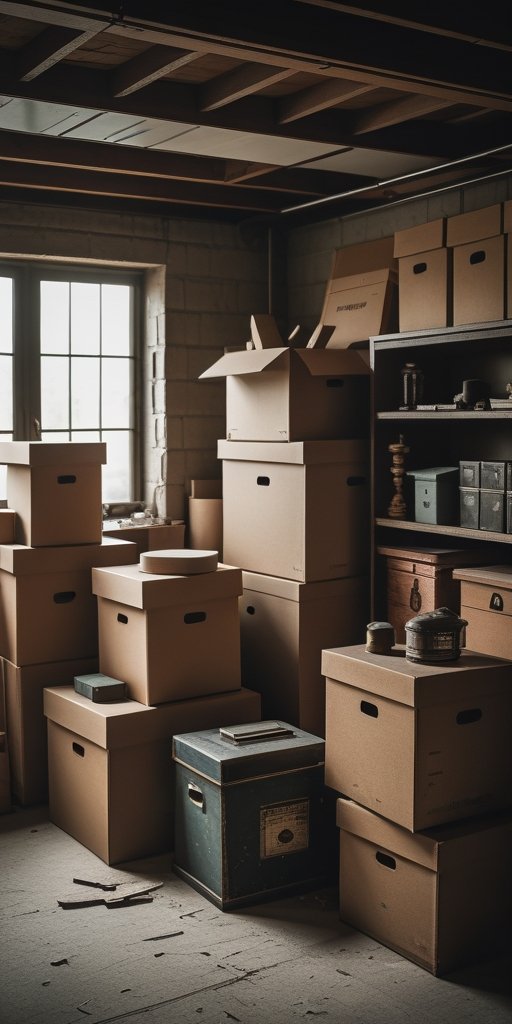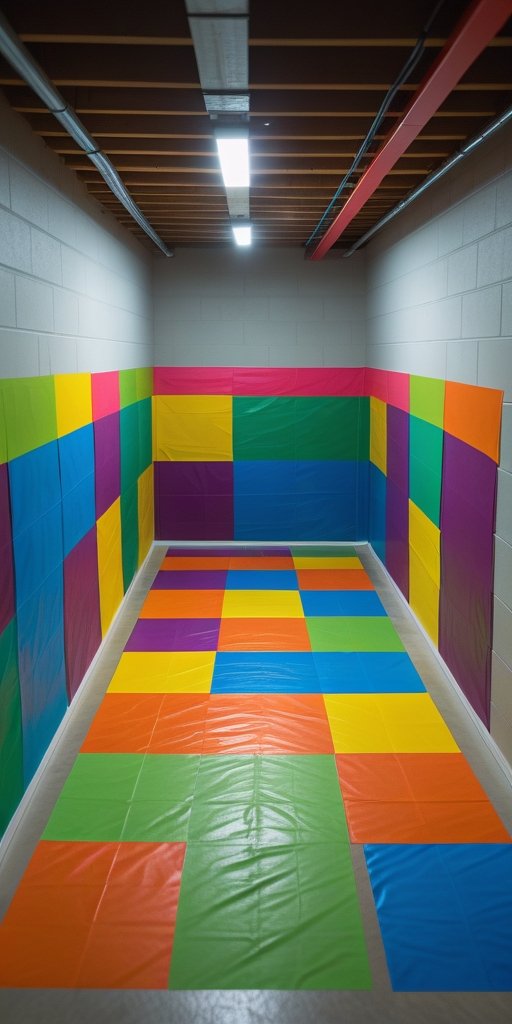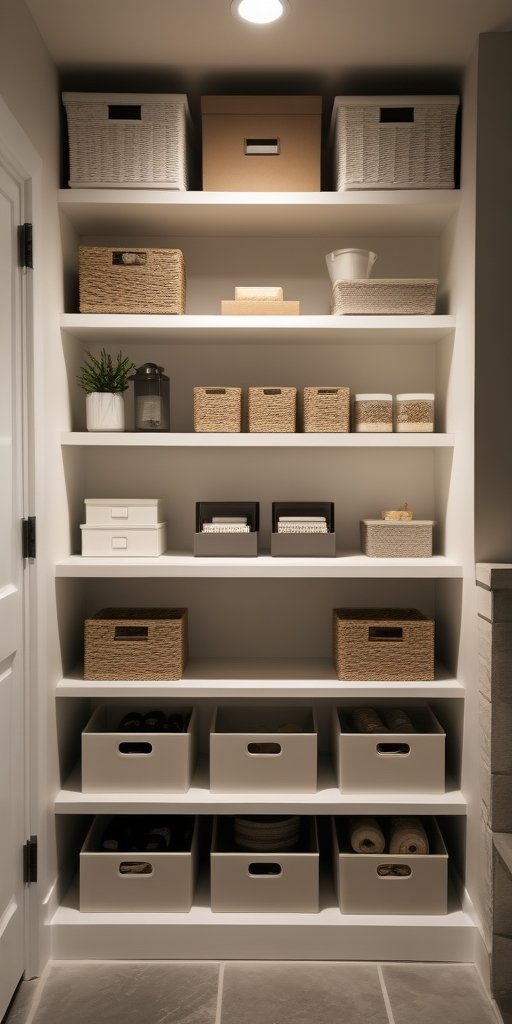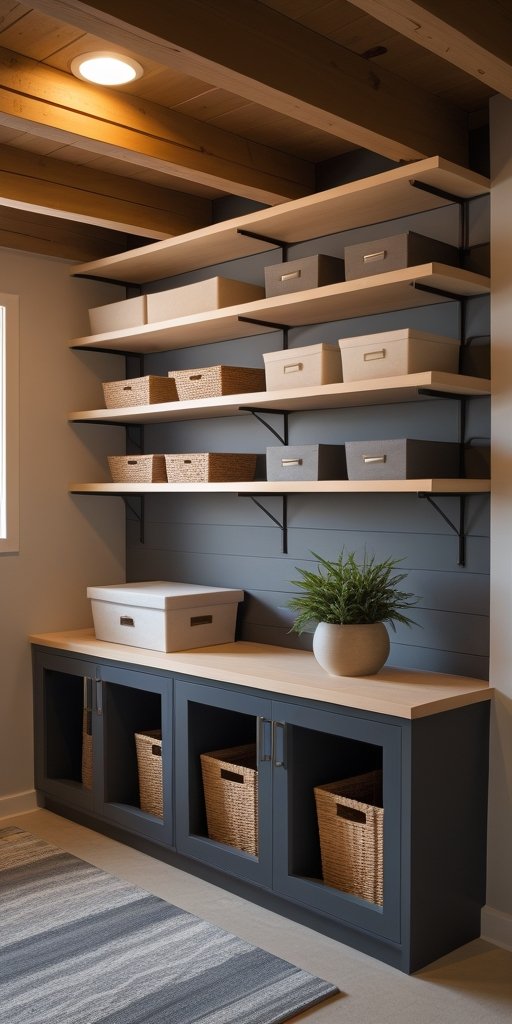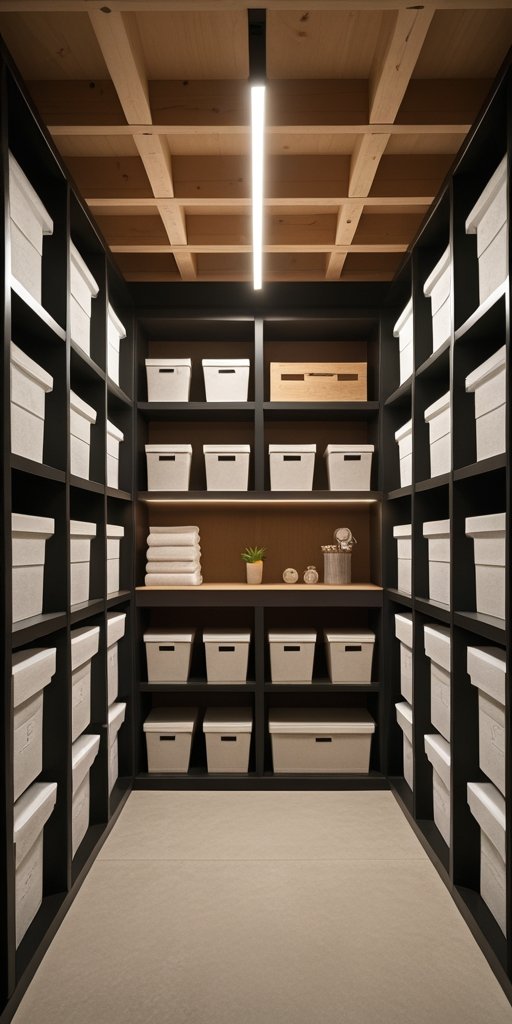For many, the basement is a place of chaos and forgotten treasures. Moving boxes, discarded furniture and items that are no longer needed are piled up here to form a seemingly impenetrable mountain. But with the right approach, this hodgepodge can be turned back into a usable space that not only keeps things tidy, but also offers valuable storage space.
We’ve all been there: going into the basement is like an expedition into the unknown, where you have to find your way between dusty boxes and overflowing shelves. Yet this extra living space could be so much more than just a place to store “I might need that again” items. With our 12 practical tips, you can transform your basement step by step into an organized and efficient storage space.
Tidying up the cellar: the first step towards more order
The first step towards a tidy basement begins with a thorough inventory and deciding what can stay and what has to go. It helps to divide all items into three categories: keep, sell/give away and dispose of. After sorting out, the remaining items can be systematically arranged and stored in labeled boxes or shelves. Good organization saves time later on and prevents the cellar from becoming a collection point for unnecessary items again.
Basement organization made easy: Understanding the basics
Proper cellar organization begins with sorting out items that are no longer needed and a thorough clean. You should then draw up a plan of which areas are reserved for which types of items. It is also important to protect against moisture through regular ventilation and suitable storage containers. With a well thought-out system, every item will have its own place in the future.
Using and installing cellar shelving correctly
When installing, ensure that the wall is level so that the load is evenly distributed. The condition of the wall determines the choice of the right wall plugs and screws. Before drilling, power cables and water pipes should be located in the wall. A systematic arrangement of shelves provides a good overview and easy access to stored items. Regular checks for stability and possible rust formation extend the service life of the cellar shelving.
Clearing out the basement: what can go?
Before throwing things away, you should check whether they still have value and can be sold or donated. Furniture in good condition, functional electrical appliances or sports equipment often find grateful buyers. Important documents, photos and sentimental mementos should be sorted out and stored in a dry place. Seasonal items such as Christmas decorations or camping equipment can remain in the cellar, but should be organized in labeled boxes.
Cleverly divide and mark cellar zones
Good lighting in the individual zones is important for orientation and use. LED strips or motion detectors provide sufficient light. The paths between the zones should remain clear and be at least 80 cm wide. Additional signs or site plans can be attached to the walls to help visitors find their way around.
Optimal use of cellar storage space
Well thought-out zoning helps to make the best possible use of the available space. Frequently used items belong in the front, easily accessible area. Seasonal items such as Christmas decorations or garden tools can be stored further back. Narrow aisles between the shelves should remain free so that all areas can be accessed at any time. With a good lighting concept, you can keep an overview even in dark corners.
Cellar sorting according to the zone principle
The zones should be logically arranged and easily accessible. Frequently used items belong in the front area, rarely used items can be stored further back. Labeled shelves and boxes as well as a floor plan help to maintain the zone system in the long term. Regularly sorting out items that are no longer needed prevents the zones from becoming cluttered over time.
Cellar lighting for a better overview
The selection of the right lighting fixtures should be based on the specific requirements of the various basement areas. While uniform ambient lighting is sufficient in storage areas, hobby or workshop rooms require brighter and more targeted illumination. Moisture-proof luminaires with protection class IP44 or higher are particularly important to withstand typical cellar conditions and ensure safety.
Avoid basement moisture during storage
Good insulation of the basement walls and floors as well as functioning drainage around the house are the basis for a dry basement. If there are signs of penetrating damp, such as a musty smell or damp patches, the cause should be determined and rectified immediately. Sensitive items are best stored in airtight containers or with silica gel and checked regularly.


